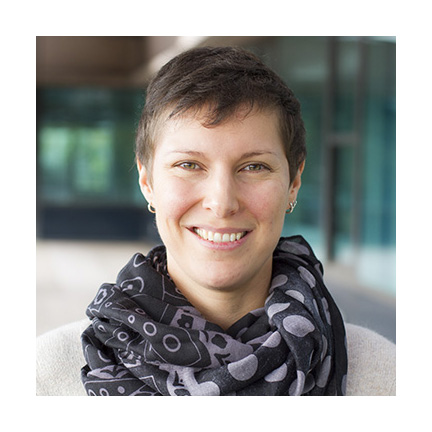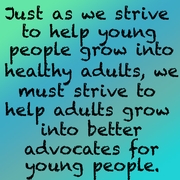"Shocking" News: Pregnancy More Likely in LGB Teens!
By Annika Shore, MPH | May 28, 2015
A study has recently come out that has everyone in my field talking. I’ve seen posts about it in newsletters and blogs about it on social media. Announcements were made in all my professional networks. This new study shows that lesbian, gay and bisexual teens are more likely to experience a pregnancy than their heterosexual counterparts.
I was happy to see that this new research was getting people in my community talking about an issue I care deeply about: the health and well-being of youth—especially the health and well-being of youth who identify as lesbian, gay or bisexual. However, this is not new information. This research confirms something we have known for many years and is not, in fact, “shocking.”
The shock people are feeling, I think, is due to the fact that this study requires us to reflect on our own assumptions about the lives and sexual behaviors of young people. I’m gratified that this research is raising awareness about adolescent sexual health and sexual identity. My personal response is layered with many bright hopes, and one troubling fear.
My Hopes
I hope that this research can be used to highlight some important dynamics and needed changes within the field of adolescent sexual and reproductive health. For example:
- Let’s check our assumptions. I hope this research causes those of us who hold any sway over young people’s lives, decisions and health to check our assumptions. Young people’s sexual identity does not dictate every sexual behavior in which they engage. Neither does their sexual behavior dictate their sexual identity.
We must stop conflating the two concepts. Instead, let’s look at youth as whole people with complex identities and behaviors and unique lived realities.
- Pay attention to disparities. I hope that this research helps us pay better attention to the sexual health disparities of all marginalized groups of young people. Lesbian, gay and bisexual teens as a group are just one of many populations that receive an inequitable portion of available resources.
This research points to the inequitable position LGB young people hold within our societal and cultural structures. It begs the question of what factors contribute to this positioning.
- Provide better institutional support. I hope that this research begins a larger conversation about the ways institutions can support the sexual and reproductive health of all young people. This requires shifts in policy, practice and allocation of resources. Adolescent pregnancy prevention programs and initiatives will hopefully learn from this study and similar research. It’s time to take action to design services and educational programs that are responsive to the needs of all youth.
Young people need and deserve services and educational programs that incorporate information and skills relevant to their lives. We need to speak not only to teens’ sexual identity, but to their whole selves. That means we consider race, ethnicity, class, cultural background, sexual orientation and gender identity.
My Fear
My fear is that this research will further stigmatize an already stigmatized group of people.
Adolescent pregnancy is a hot-button issue within the sociopolitical dialogue in the United States. I do not want to see the fact that lesbian, gay and bisexual youth are more likely to experience a pregnancy than their heterosexual counterparts used to suggest that LGB youth are inherently a “problem” that needs to be solved.
Any time we see research showing health inequity, we are making a mistake if we then point to the individuals who experience the inequity as the perpetrators of the problem. Instead, we must look to the institutions and systems within which those individuals live. What can be done at these institutional and systemic levels to reduce the disparity?
This mistake has been made before, and I sincerely hope it is not made again.
What Can We Do?
So, what can we do to actualize my hopes and not my fear? So many things!
- Listen up! We can listen to young people. Let’s create assumption-free spaces where youth are safe both to self-identify, and talk about their unique experiences and behaviors. Then let’s help them get their needs met based on what we learn from them, rather than what we assume about them.
- Engage with whole people. Health care providers, policy makers and educators can develop programs and practices that engage with adolescents as whole people, not with just one element of their lives.
We need to develop educational programs that are relevant to the lives of LGB students. This means going beyond including gender-neutral language in instructional materials and activities. High-quality adolescent sexuality education can incorporate instruction and learning that helps all young people (not only those who identify as LGB) understand the process of identity development, and the distinction between identity and behavior. All young people are in the process of discovering their sexual identities—let’s design programs that speak to that process and support youth in finding healthy, safe and joyful ways to experience their sexuality.
Health care providers need training that helps them be responsive to young people. It takes practice to learn to ask appropriate questions that both honor young people’s identities and lead them to share honestly about their behaviors. This is the only way we can offer services that enhance, rather than stymie, their sexual and reproductive health.
In school district policies, we need to include anti-discrimination clauses that address sexual identity and orientation and gender identity.
Ultimately, all of this also means allocating pregnancy prevention funds to accommodate what we know about the diverse experiences of youth.
- Become better advocates. We need to invest in training for the adults in young people’s lives who have power over what happens to them. As health care providers, educators, parents and policymakers, we can all grow in our ability to make the lives of young people better. Just as we strive to help young people grow into healthy adults, we must strive to help adults grow into better advocates for young people.
I am glad this study came out when it did, and I am glad that we, as a field, are paying attention to it. My personal commitment now is to take what I’ve learned from this research and use it to make positive change. Please, join me!
 Annika Shore, MPH, serves as a professional development consultant with ETR. In that role, she provides evidence-based professional development and technical support to HIV, STD and pregnancy prevention initiatives across the country, and supports all aspects of ETR’s professional learning services.
Annika Shore, MPH, serves as a professional development consultant with ETR. In that role, she provides evidence-based professional development and technical support to HIV, STD and pregnancy prevention initiatives across the country, and supports all aspects of ETR’s professional learning services.




